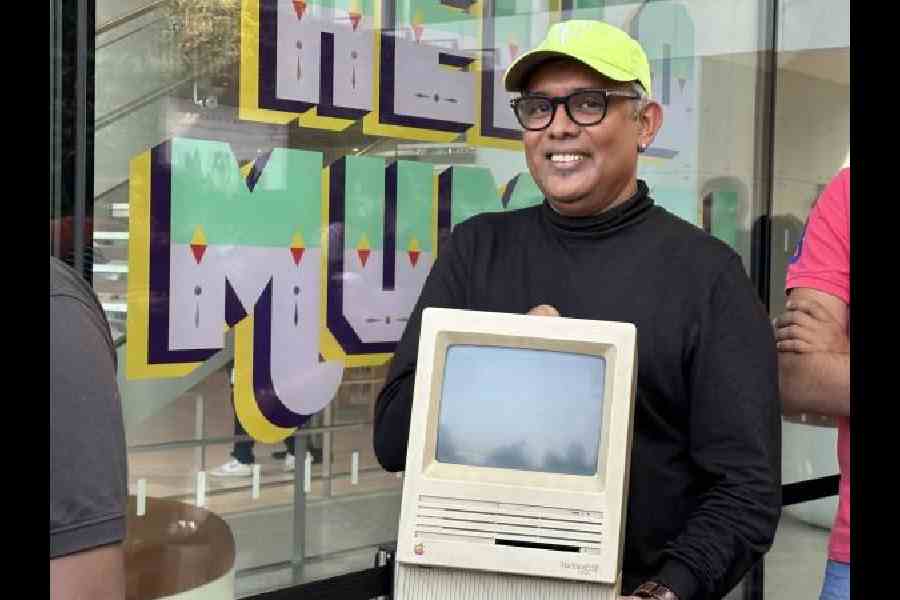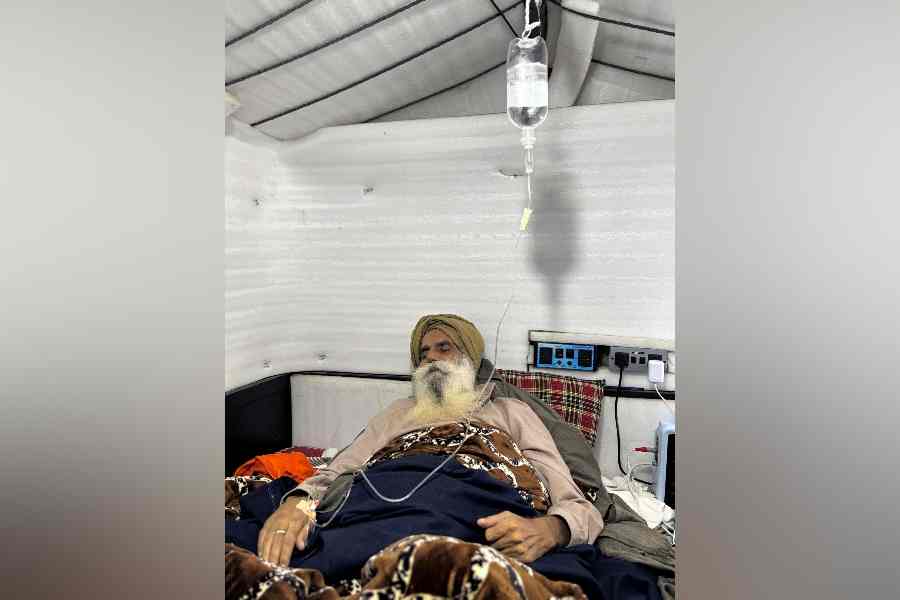The average person in 1984 had no idea what a computer was. Before Apple, the computer industry was found in a few places, like scientific institutes, banks and military offices. Some companies used it to crunch massive amounts of data. The original computers filled rooms or at least a room. Any old image of the computer will have spool tapes running while a bunch of people were at its command. And not everyone was allowed to use a computer. Only “specialists”.
It was the era of IBM, which was a big name among big businesses. The focus was not on home computers. The microprocessor changed everything. Pioneered in the early 1970s, it shrunk the brain of a computer. Everything changed. Steve Jobs and Steve Wozniak understood what the future of computers had in store.
Not that home computer as a segment was given a miss completely before the 1984 Macintosh. There was a computer from RadioShack, IBM PC in 1981 was another, then Compaq Portable… but you had to know what to key in, that is, the instructions you had to give to the computer. Home PCs weren’t friendly or portable. The war of PC clones went nowhere. These were impossible to use without extensive technical training.
Until 1984, when Macintosh arrived on the scene. It was definitely meant for home use and was portable. It was no ordinary machine. The original Macintosh found a place on a table that also had the telephone, which talks a lot about the importance of a machine.
All the software on the Mac worked the same way as they do today — point and click. The app windows had a title bar with a close button on the left. You could click the scroll bar to move around. If the user was confused, there was a way to read through the menu bar. It showed you the keyboard shortcuts, so you could learn those over time. Despite the chunky appearance of the original keyboard and mouse, we still recognise them. The mouse was as comfortable to use left-handed as it was right-handed. The world finally had a computer for which a manual was not required to operate.
The Mac has changed the way we think about what computers are and what they can do. It’s so easy to think of Apple as a massive company, which they are at the moment. But it wasn’t that way in the early 1980s. The Mac helped define what they’ve become today.
1984 wasn’t like 1984
The decades have rolled by and now when we mention ‘Mac’ it can mean a lot of things, like the MacBook Air, MacBook Pro, iMac, Mac Mini, Mac Pro and Mac Studio. But everything harks back to the 1984 Macintosh, which made graphical user interface popular.
In 2024, the Mac remains as popular as ever and, of course, relevant to the things that we all do every day. Of course, we have moved way beyond the 128KB of RAM. The Apple silicon has changed the amount of power a Mac can offer today.

The Mac continues to be a bestseller for Apple
For most, the first Mac experience always turns out to be transformational. Once a college-going kid picks up a MacBook Air, things change completely. It’s light, compact and is a powerhouse that gets most activities done. It simply slips into the bag and there is no need to carry a power brick around. For example, I am a heavy user of the MacBook Air and I easily get more than a day out of the machine. And that matters a lot to anyone who likes to be on the move throughout the day.
What the Mac has done is allow people from different backgrounds to pursue their hobbies, whether music, film editing, writing, coding, interior designing or aeronautical engineering. The various teams at Apple keep getting blown away by the use cases of the Mac.
In 1984, Apple was still a small company when compared to IBM. If you rewind to news articles from the era, industry analysts predicted that Apple, like many other smaller companies, would be forced out of business. But the folks at Apple knew what they wanted to deliver and Steve Jobs liked being an underdog, he knew the story his product had to tell.
Apple’s messaging was on point when a television commercial entitled ‘1984’ was shown during Super Bowl XVIII on January 22, 1984, directed by none other than Ridley Scott. It was a take on George Orwell’s 1984. There was Big Brother out there watching you, and they sort of likened IBM to Big Brother. And this woman (Anya Major, who also starred in Elton John’s video for Nikita) comes running in slow motion, swinging a hammer, throws it against a screen and shatters it... it was like the hold of IBM was shattered. “On January 24th, Apple Computer will introduce the Macintosh. And you’ll see why 1984 won’t be like 1984.”
Future-ready machines
Soon after, Steve Jobs unveiled his company’s creation. The original unveiling of the first Macintosh was a typical Jobs moment. Being a master showman, he took it out of a bag, one-handed. Even though there wasn’t much internal storage, there was a great opportunity for developers. Plus, Jobs knew the role “influencers” would one day have. He gifted the Macintosh to people who inspired/influenced people, like John Lennon’s son, Sean, received one, and so did Andy Warhol.
Jobs wanted the world to know what one could do with a computer. There were software tools like MacWrite and MacPaint. MacPaint, for example, gave the creative community something to talk about and paved the way for Photoshop. In India, the 1984 Macintosh wasn’t the childhood computer for most but we can’t ignore the impact it has had on computer history. Look at the Mac today. It is at the heart of everything we do. We are talking about generative AI and the amount of power it requires. Well, Apple doesn’t have to talk about AI because all the power these AI tools require can be had on a Mac… you simply choose the machine. Be it the M1 chip or the M3, AI is child’s play for the Apple silicon. These have a powerful neural engine to accelerate on-chip machine-learning tasks. Every system has a very powerful CPU that has ML accelerators built right in to deliver CPU-based AI operations and a very powerful GPU that is very relevant for certain kinds of AI workloads and together those build an incredible platform for AI capabilities on the Mac. That goes all the way back to the Apple silicon transition. On top of that, all Apple silicon chips are built around the unified memory architecture for dramatically improved performance and efficiency. This is a foundational advantage in that that entire chip, all of those elements, have access to this large high-speed pool memory, and it allows, for example, to run things like massive large language models that have tens of billions of parameters.

An Apple fan at the opening of Apple BKC store in Mumbai in 2023
In a more consumer-focused machine, like an iMac or MacBook Air, the AI acceleration is there for people to use for everyday tasks. There are a number of powerful features built into the operating system that can handle professional apps and what data scientists can do with AI on Apple’s more powerful machines. In the 40 years, so many things have happened at Apple, like the arrival of iOS and iPadOS. And now we have visionOS, which powers Apple’s Vision Pro spatial computing headset. But everything somehow blends in and nothing gets left behind. Mac introduced us to personal computing, the iPhone introduced us to mobile computing, Apple Vision Pro will possibly introduce us to spatial computing. One of Apple’s core strengths is the ability to use all its products together to deliver the best possible results for users. For example, with Apple Vision Pro, users can use the Mac with infinite screen real estate. It introduces new ways to multitask. Users can bring the powerful capabilities of the Mac into the Vision Pro to create a new world for them.
Continues to create milestones
Nobody can deny Apple its legacy — the Macintosh gave us the idea of having a computer in our homes. The computer was no longer just an industrial tool; it became something personal. What’s also interesting is how Apple changed the Mac over the decades. When Steve Jobs returned to Apple in 1997, the company was in a mess. It needed a new computer to be built from the ground up — new hardware, new software and new messaging. It came in the form of the iMac. The iMac appeared when this new thing was taking over — the Internet, which, of course, went on to change the way we consume news, media and whatnot. And the iMac was the Internet Mac. Apple — with designer Jony Ive at his finest — delivered the iMac G3, which proved to be a cultural and computing milestone. No screws to take out or metal panels to remove. You could easily get a computer working in seconds. One hit followed another. Computers are all around us. I don’t know how many hundreds of millions of Macs are out there. But here’s something I know: usually products lose their charm when they go mass market. Not the Mac. It continues to epitomise better computers, better software. More importantly, it continues to inspire us to think differently.











